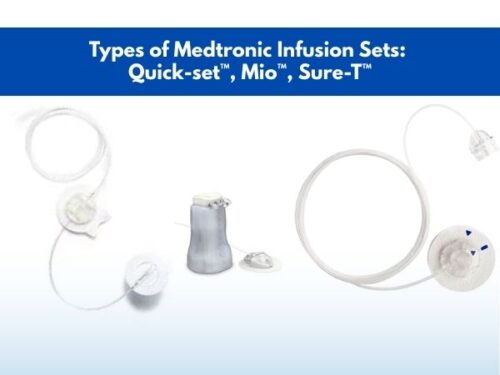What are the types of wound drainage?

Types of Wound Drainage: Expert Guide to Post-Surgical Care and Management
Since the beginning of time, humans have used several types of herbs and procedures to expedite wound healing. For this purpose, people in different parts of the world used several natural ingredients including honey, animal grease, herbs, leaves, and, various types of alcohol. This was done to stop the bleeding from the wound and to drain all the fluids from the wound. In this way, it helped to heal the wound faster and also in the prevention of an infection. The wounds caused by surgeries also need to be taken care of properly to ensure better wound management and save the patient from severe consequences including acute pain, swelling, and, infections.
What are wound drains?

Wound drains
Wound drains are medical devices used after surgery to remove excess fluid or air that can accumulate at the surgical site. Without proper drainage, collected fluids can increase the risk of complications and infections, potentially delaying healing.
Purpose and Benefits of wound drain:
- Prevents fluid accumulation (blood, pus, and other bodily fluids)
- Eliminates dead space and air pockets
- Allows monitoring of drainage type and amount
- Reduces risk of infection
- Promotes faster wound healing
- Enables fluid characterization for medical assessment
Types of Surgical Procedures Using Drains:
- Breast surgery (to prevent lymph and blood accumulation)
- Thoracic (chest) surgery
- Thyroid surgery
- Neurosurgery
- Pancreatic surgery (for secretion management)
- Drainage of infected cysts
- Abdominal surgery
Related Drainage Devices:
- Chest tubes
- Urinary catheters
- Nasogastric tubes
What are the types of wound drainage?
Understanding the characteristics of wound drainage is crucial for proper wound assessment and treatment. Healthcare providers classify wound drainage based on its appearance, consistency, and composition.
Primary Types of Wound Drainage:
-
Serous Drainage
- Appearance: Clear, watery, light yellow
- Characteristics:
- Thin, plasma-like consistency
- Normal in early wound healing
- Usually indicates healthy healing
- Clinical significance:
- Expected in early healing phases
- Excessive amounts may indicate inflammation
-
Sanguineous Drainage
- Appearance: Fresh, bright red
- Characteristics:
- Contains fresh blood
- Common immediately post-surgery
- Usually decreases within first 24-48 hours
- Clinical significance:
- Normal in fresh wounds
- Persistent bleeding requires assessment
-
Serosanguineous Drainage
- Appearance: Pink to light red
- Characteristics:
- Mixture of serous fluid and blood
- Thin, watery consistency
- Most common type of surgical drainage
- Clinical significance:
- Normal in healing wounds
- Expected during early healing phases
-
Purulent Drainage
- Appearance: Thick, cloudy
- Color variations:
- Yellow
- Green
- Brown
- Characteristics:
- Often malodorous
- Contains white blood cells
- May be associated with debris
- Clinical significance:
- Indicates infection
- Requires medical intervention
-
Hemorrhagic Drainage
- Appearance: Dark red to burgundy
- Characteristics:
- Contains older blood
- Heavier consistency than sanguineous
- Clinical significance:
- May indicate deep tissue damage
- Requires clinical assessment
Assessment Factors:
Healthcare providers evaluate wound drainage based on:
- Volume (minimal, moderate, heavy)
- Color
- Consistency
- Odor
- Timing in relation to injury/surgery
Clinical Implications:
- Changes in drainage characteristics may indicate:
- Healing progress
- Complications
- Need for intervention
- Infection risk
- Documentation of drainage characteristics helps:
- Monitor healing progress
- Guide treatment decisions
- Identify complications early
Factors Affecting Wound Drainage
Wound drainage is an important indicator of the healing process and can provide valuable insights into the condition of a wound. The amount and type of drainage can be influenced by various factors, which must be carefully managed to ensure optimal healing. Below are some key factors that can affect wound drainage:
-
Patient Factors:
- Age: Older patients may experience slower healing and altered drainage due to decreased skin elasticity and reduced immune response.
- Nutrition: Poor nutrition can impair wound healing and drainage. Nutrients like protein, vitamin C, and zinc are essential for tissue repair.
- Medications: Certain drugs, such as corticosteroids or blood thinners, can impact wound healing by affecting inflammation or blood flow.
-
Wound Characteristics:
- Size and Depth: Larger and deeper wounds typically produce more drainage due to increased tissue damage.
- Location: Wounds in areas with more movement or pressure (e.g., joints) may have higher drainage rates due to mechanical stress.
-
Medical Conditions:
- Diabetes: High blood sugar levels can impair circulation and immune function, leading to increased drainage and a higher risk of infection.
- Vascular Disease: Poor blood flow can reduce oxygen delivery to tissues, slowing healing and increasing drainage.
-
Environmental Factors:
- The wound’s exposure to air, humidity, and moisture can affect drainage. Proper wound dressing can help control the wound environment and drainage levels.
-
Infection Status:
- Infected wounds often produce increased or discolored drainage due to the body’s immune response to bacteria. Signs include foul odor and pus-like discharge.
-
Treatment Interventions:
- Dressings and Bandages: The type of dressing used can either promote or reduce drainage. Absorbent dressings are often used for heavily draining wounds.
- Debridement and Cleansing: Proper wound care procedures, like cleaning and removing dead tissue, can influence drainage levels.
Understanding these factors is crucial in managing wound care to promote effective healing and minimize complications.
Warning Signs in Wound Drainage
Wound drainage is a normal part of the healing process, but certain changes can indicate complications that require prompt medical attention. Monitoring drainage for warning signs can help detect potential issues early on. Here are some red flags to watch for:
-
Sudden Increases in Volume
A sudden surge in the amount of drainage can indicate complications such as wound infection, tissue damage, or the reopening of a healing wound. If the wound starts producing significantly more fluid than before, it’s important to seek medical advice.
-
Color Changes
Drainage should typically be clear, slightly yellow, or pinkish in color. If the drainage turns green, brown, or cloudy, it may indicate an infection. Additionally, bloody drainage that suddenly becomes more pronounced can signal new bleeding, which might require medical intervention.
-
Development of Odor
While mild odors can sometimes be normal, especially in wounds that are covered for extended periods, a strong, foul smell is often a sign of infection. This is particularly concerning if accompanied by other symptoms like increased pain, redness, or swelling.
-
Unexpected Consistency Changes
Normal wound drainage is usually thin and watery. If it becomes thicker or pus-like, it could suggest that the body is fighting off an infection. The presence of thick, white, or yellow discharge should be evaluated by a healthcare professional.
-
Excessive Duration
Wound drainage is expected to decrease over time as healing progresses. If a wound continues to produce significant drainage for an extended period or suddenly increases after initially decreasing, it may indicate that the wound is not healing properly.
When to Seek Professional Help
If you notice any of the above warning signs or experience increased pain, redness, or swelling around the wound, it’s crucial to consult a healthcare professional. Early intervention can prevent complications, promote faster healing, and ensure that the wound does not worsen.
Prevention and Best Practices for Wound Drainage
Preventing complications in wound care is crucial for promoting healing and reducing the risk of infections or prolonged recovery times. Following best practices and preventive measures can significantly improve patient outcomes. Here are some essential guidelines to consider:
-
Infection Control Measures
Keeping the wound clean and protected is vital to preventing infections. This includes thoroughly washing hands before and after touching the wound, using sterile equipment, and following proper cleaning protocols. Regularly monitoring for signs of infection, such as increased redness, swelling, or foul-smelling drainage, is also critical.
-
Proper Dressing Techniques
Selecting the right type of dressing for the wound is essential for optimal healing. Dressings should be chosen based on the wound type, drainage levels, and location. It’s important to change dressings as recommended to prevent bacterial growth and to keep the wound environment conducive to healing. Ensuring a secure fit without restricting circulation can also help protect the wound.
-
Environmental Considerations
Maintaining a clean, dry environment around the wound can prevent contamination. Temperature, humidity, and exposure to dust or irritants should be controlled, especially in home care settings. Avoiding exposure to water (e.g., during showers) may require protective coverings.
-
Nutrition and Hydration
A balanced diet rich in proteins, vitamins, and minerals is essential for wound healing. Nutrients like vitamin C, zinc, and iron support tissue repair and immune function. Staying well-hydrated is also important to maintain skin elasticity and promote efficient cell function.
-
Activity Modifications
Limiting activities that may strain the wound or cause it to reopen is crucial. Patients may need to modify their routines to reduce pressure on the affected area. For wounds on joints or high-movement areas, gentle exercise and proper support can help prevent complications.
-
Compliance Importance
Consistently following the wound care plan prescribed by healthcare providers is essential for successful healing. This includes attending follow-up appointments, adhering to medication schedules, and reporting any concerning changes promptly. Proper compliance ensures that minor issues are addressed before they become serious complications.
By adhering to these preventive measures and best practices, patients can significantly improve their chances of a smooth and swift recovery.
Conclusion
Understanding the types of wound drainage is crucial for effective wound assessment and management in healthcare settings. The characteristics of wound drainage, including serous, sanguineous, serosanguineous, purulent, and hemorrhagic, provide valuable clinical indicators about the wound’s healing status and potential complications. Proper assessment of drainage type, volume, color, consistency, and odor helps healthcare providers monitor healing progress and detect potential complications early.
By understanding these different types of wound drainage, healthcare professionals can make informed decisions about wound care interventions, identify infections promptly, and adjust treatment plans accordingly. Regular monitoring and documentation of wound drainage characteristics remain essential components of comprehensive wound care, ultimately contributing to better patient outcomes and more effective healing processes. This systematic approach to wound drainage assessment has become a cornerstone of modern wound care management and plays a vital role in preventing complications and promoting optimal healing.



















